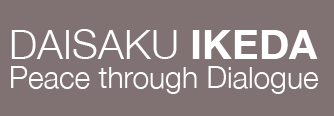Time for a Treaty to Bring an End to Nuclear Danger (The Japan Times, Mar. 1, 2017)
Last December, the United Nations General Assembly adopted a historic resolution calling for the start of negotiations on a legally binding instrument to prohibit nuclear weapons. The resolution calls for a first conference to be convened at the end of March at U.N. Headquarters in New York, and encourages participating governments to exert their best efforts for the early conclusion of a treaty. It further calls for the participation and contribution of international organizations and civil society representatives.
We must seize the opportunity to put an end to the era of nuclear weapons. There are still more than 15,000 nuclear warheads in our world today. Efforts in nuclear disarmament have stalled, while plans for modernization of arsenals have progressed. The threat posed by these weapons is, if anything, growing.
I would like to urge constructive discussions at the upcoming U.N. negotiations, as well as the earliest possible holding of a U.S.–Russia summit in order to reinvigorate the nuclear disarmament process.
A truly weighty responsibility bears down on the shoulders of the leaders of these two countries that together possess over 90 percent of the world’s nuclear arsenals which threaten the lives of everyone on Earth and could reduce to ash the civilizations humanity has forged over the millenniums.
More than 25 years since the end of the Cold War, the policy of nuclear deterrence is still in effect, and approximately 1,800 nuclear weapons are on high alert, meaning they can be launched at an instant’s notice.
What does this actually mean?
Former U.S. Secretary of Defense William J. Perry recently recounted an episode from his time as undersecretary of defense in the Carter administration. He received a late-night emergency communication from the watch officer at the North American Aerospace Defense Command (NORAD) indicating that 200 Soviet missiles were in flight heading toward the United States. Although this was quickly understood to be a false alarm, had it been accurate, the president of the U.S. would have had only minutes to make the momentous decision whether or not to launch a nuclear counter-strike.
The logic of deterrence requires being able to demonstrate the readiness to retaliate at any time as a means of forestalling an enemy strike. Under these conditions, one’s guard cannot be let down even for a moment, and the threat of imminent nuclear war becomes a constant and unavoidable burden.
Sixty years ago in 1957, Soka Gakkai’s second president, Josei Toda, made a powerful declaration calling for the abolition of nuclear weapons. At the time, both the U.S. and the Soviet Union were testing hydrogen bombs, and the Soviet Union had recently successfully tested an intercontinental ballistic missile.
The U.S.-Soviet nuclear confrontation was compared at the time to “two scorpions in a bottle.” What was largely forgotten was that many countries other than the nuclear-weapon states were also in the same bottle, along with their several billion inhabitants.
This is why Toda wanted to challenge the underlying thinking that justifies the possession of nuclear weapons. Stating forcefully that “we, the citizens of the world, have an inviolable right to live,” he declared that it was impermissible for any country to threaten this right and that the use of nuclear weapons can never be justified. He also called on youth to take up the challenge of working for their abolition.
Given the lethal risks of nuclear weapon detonation resulting from accident or error, I once more urge the leaders of the U.S. and Russia to engage in dialogue toward taking their weapons off high alert and to make significant new progress in nuclear arms reduction.
I also propose that Japan play an active role in building consensus in the negotiations toward the conclusion of a nuclear weapons treaty starting in late March, as the only country in the world to have experienced a nuclear attack in wartime. Recognizing this historical responsibility and mission, Japan should work assiduously to achieve the broadest possible participation, including that of states that possess or rely on nuclear weapons for deterrence.
It is also important to ensure linkages with the first Preparatory Committee for the 2020 Review Conference of the Parties to the Treaty on the Non-Proliferation of Nuclear Weapons to be held in May. A treaty prohibiting nuclear weapons shares the same standpoint as the NPT—deep concern over the horrors of nuclear war—and would reinforce it.
The work of establishing a treaty prohibiting the production, transfer, threat of use or use of nuclear weapons should be viewed as a global enterprise with the goal of preventing the horrors of nuclear war from ever again being experienced by any country. Earnest efforts must be made to find a way to reach a consensus based on this vision.
I also encourage the full spectrum of civil society actors to generate statements directed toward the negotiations. Together, these would constitute a people’s declaration for a world without nuclear weapons and serve as a popular basis for a treaty prohibiting them.
Nongovernmental organizations and citizens’ groups can play a vital role in clarifying and giving a human face to problems that are deeply relevant to all people across national borders—problems that might otherwise only be addressed within the context of national policy.
Now is the time for us to express strong support for the upcoming negotiations and build momentum to establish this historic treaty as a unique form of people-driven international law.
Share this page












